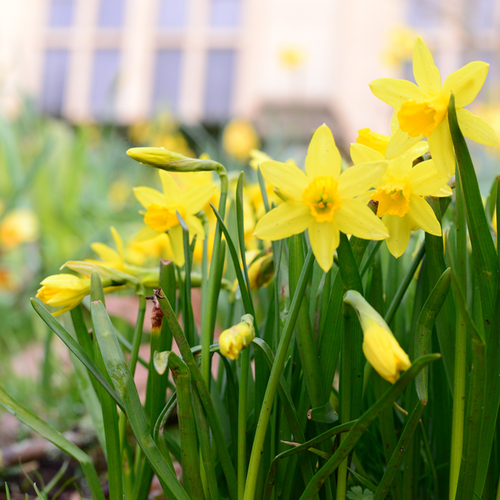
Daffodil
Scientific names: Narcissus pseudonarcissus
Family: Amaryllidaceae
Alternate names: Coucou, Jeannette, Jonquille, Jonquille Sauvage, Lent Lily, Narcisse Jaune, Narcisse des Prés, Narcisse Trompette, Narciso, Narcissus, Paquette
Background
Daffodil (Narcissus pseudonarcissus) is a plant. All parts of the plant are poisonous. Don't confuse the bulbs with onion bulbs, or the stems with Chinese chives.
People use daffodil for asthma, joint pain, and wound healing but there is no good scientific evidence to support these uses. Daffodil is also unsafe.
People use daffodil for asthma, joint pain, and wound healing but there is no good scientific evidence to support these uses. Daffodil is also unsafe.
Safety Safety definitions
When taken by mouth: Daffodil is likely unsafe. All parts of the plant are poisonous. Daffodil can cause vomiting and diarrhea. Larger doses can cause more serious side effects. Some people have become seriously ill after confusing daffodil bulbs with onion bulbs, or the stems and leaves with Chinese chives.
When applied to the skin: Daffodil is possibly unsafe when applied to the skin. Handling daffodil plants or bulbs can cause severe skin irritation.
When applied to the skin: Daffodil is possibly unsafe when applied to the skin. Handling daffodil plants or bulbs can cause severe skin irritation.
Special Precautions & Warnings:
Pregnancy and breast-feeding: Daffodil is likely unsafe when taken by mouth or applied to the skin while pregnant or breast-feeding. Stay on the safe side and avoid use.Effectiveness
Effective Effectiveness definitions
There is interest in using daffodil for a number of purposes, but there isn't enough reliable information to say whether it might be helpful.
Dosing & administration
All parts of the daffodil plant are poisonous. Taking it by mouth or applying it to the skin can be unsafe. Consult a healthcare provider before using.
Interactions with pharmaceuticals
It is not known if Daffodil interacts with any medicines. Before taking Daffodil, talk with your healthcare professional if you take any medications.
Interactions with herbs & supplements
Calcium: Daffodil contains a chemical that can bind with calcium in the intestine. This might reduce the amount of calcium that the body absorbs from supplements.
Iron: Daffodil contains a chemical that can bind with iron in the intestine. This might reduce the amount of iron that the body absorbs from supplements.
Zinc: Daffodil contains a chemical that can bind with zinc in the intestine. This might reduce the amount of zinc that the body absorbs from supplements.
Iron: Daffodil contains a chemical that can bind with iron in the intestine. This might reduce the amount of iron that the body absorbs from supplements.
Zinc: Daffodil contains a chemical that can bind with zinc in the intestine. This might reduce the amount of zinc that the body absorbs from supplements.
Interactions with foods
Daffodil contains a chemical that can bind with calcium, iron, and zinc in the stomach. This might reduce how much calcium, iron, and zinc the body absorbs from foods.
vital.ly has licensed monographs from TRC Healthcare.
This monograph was last reviewed on 18/02/2022 23:31:05 and last updated on 07/08/2022 07:29:59. Monographs are reviewed and/or updated multiple times per month and at least once per year.
Natural Medicines disclaims any responsibility related to medical consequences of using any medical product. Effort is made to ensure that the information contained in this monograph is accurate at the time it was published. Consumers and medical professionals who consult this monograph are cautioned that any medical or product related decision is the sole responsibility of the consumer and/or the health care professional. A legal License Agreement sets limitations on downloading, storing, or printing content from this Database. No reproduction of this monograph or any content from this Database is permitted without written permission from the publisher. It is unlawful to download, store, or distribute content from this site.




